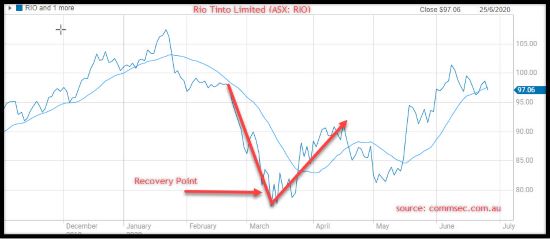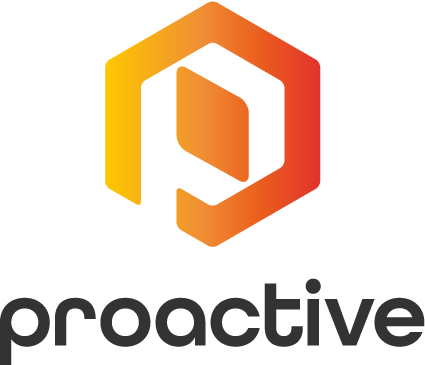A COVID-19-proof stock that is not related to gold: VIP Gloves

The last three months feels like an episode of The Twilight Zone. Who would have imagined the world as we had known would come to a complete halt? Financially, calling it anything but a catastrophic Armageddon would be an understatement. The stock market went on a spin downwards, and the ride back was just as mind-blowing.
Coming out of the downturn, I was looking for stocks that would be resilient to the volatility and have a robust business that would take on the new world – looking for that Buffett effect. Gold related stocks and investments were a given but what followed was something that I had not counted on.
As I am a resource-laden investor, things started to look good for resource-related stocks. Most of the market recovered in the middle of March and had the distinctive V recovery. Almost every company that was not directly COVID-affected started to improve and companies releasing results were rewarded handsomely. Capital markets were alive and transactions were getting closed left, right and centre.
The discovery[hhmc]
I started to seek stocks that would balance the portfolio. First on my list was a prominent list of hygiene and COVID friendly stocks. In 2015, I was in a meeting with some associates in Kuala Lumpur, Malaysia, and I remembered that they were talking about the rubber glove industry. They commented that the KLSE (Kuala Lumpur Stock Exchange) was all about these companies. Stocks such as Top Glove (MK:TOPG), Supermax (MK:SUCB) and Kossan (MK:KRI) were riding high.

It was here that my little understanding of the sector was born. I have to say that it was not until the last six months, where I gained a better understanding of the industry. When COVID happened, most people started to look into hand sanitiser, masks, plastic screens and gloves.
What is hidden behind COVID is the fact that many of the hype will bring a saturation of the market. During the lockdown stages, one could not get hand sanitiser, gloves, disinfectants (which were only good for bacteria and not viruses) or masks. You could not even get rubbing alcohol to make hand sanitiser at home. Now, they are being sold everywhere and at a fraction of the price.
The glove makers were making a good profit even before COVID. Since then, the market has been growing at near 10% per year. It was growing at 6% the last time I saw reports in 2015. As you can see in the graph below, this is year-on-year growth and spiking whenever one of these viruses appears. Remember, this is growth.

A recent May 12, 2020, research report (Maybank IB Research) showed that Top Glove (MK:TOPG) has sales secured until April 2021. There have been several reports that the manufacturers are all booked until the end of 2021. Producers in Vietnam are indicating similar demands. Due to the strength of the market, the ASPs (Average Selling Price) can change up to 1-2 months before delivery.
Also, there have been 3-5% of total quarterly sales where the ASPs were substantially higher than the market ASPs.
The report that was published by Maybank IB Research quoted the following:
We raise our FY20-22E EPS by 54%/112%/5%, projecting for its EPS to increase by 128%/35% in FY20-21E and to fall 50% in FY22E.
Those figures are mesmerising and this company has a present market capitalisation of slightly less than A$7 billion. Top Glove is the world's largest rubber glove manufacturer by volume, with 70 billion pieces per annum.
When Australian consumers go shopping these days, there is no shortage of face mask and hand sanitiser but if you look closely, gloves are slowly beginning to disappear from shelves. When one takes stock of what we use more, even decades ago, the use of gloves is higher than other PPE equipment. In an average 'inspection', one does not change a 'sperm suit' or masks after every inspection. What you do change after every review is gloves. If you go and take a blood sample, look at how many times the nurse/technician change gloves.
In Australia, we are all facing a great outcome in regard to COVID, except for our poor Victorian counterparts, there is a sense of complacency as we feel that COVID is under control. The average person thinks that we have beaten this issue, but at the same time, there is the fear of multiple potential waves. When I see the glove industry, I don't think the business is this 'pandemic' as you can see in the chart above.
Rubber gloves "aint" rubber gloves[hhmc]
The fascinating part about rubber gloves is that they are not all the same. Like every industry, the deeper you dig the more complicated the details become and hence, this where we need to explain. Like the old saying, the devil is in the detail.
What is Nitrile?[hhmc]
(source: www.glovecompany.com.au)
Nitrile is a synthetic rubber compound used as a disposable glove material. Nitrile has been around for a while, but only recently it's become more affordable, which explains why it's gaining popularity throughout medical, food and cleaning industries. Nitrile has a higher puncture resistance than any other glove material. Nitrile also has a better chemical resistance than latex or vinyl gloves.
What allows Nitrile gloves to become a standard medical supply for hospitals and emergency personnel is their hypoallergenic attribute. Nitrile gloves are powder-free and hence are more comfortable to remove from the box. They are incredibly durable and puncture-resistant. They can also withstand exposure to oils, solvents, and chemicals which typically degrades regular latex gloves.
What is latex?[hhmc]
(source: www.glovecompany.com.au)
Latex comes directly from rubber trees. Latex gloves are the most commonly used disposable gloves because they have been the only durable disposable glove material option on the market. However, now many hospitals and clinics have begun replacing their latex gloves with nitrile gloves.

Nitrile gloves are where all the action is and will be. They are the 'EV' of the glove industry. As you can see from the brief above, the market is heading to the Nitrile product. The durability properties and its low allergy reaction make this an excellent product for use. One can visualise how advantageous this product is over latex.
Nitrile gloves are of higher value and they are sold to the higher market, such as Europe and the US. Ultimately, it means more profits to the manufacturer.

According to a report by a research firm (Acumen Research and Consulting), the global nitrile butadiene rubber (NBR) latex market is expected to grow at a CAGR (Compound Annual Growth Rate) of around 15.4% over the forecast period 2019 to 2026 and reach the market value of over US$2,860.1 million by 2026.
Rubber gloves market?[hhmc]
Today, when we think of gloves, invariably, our minds think of COVID. No matter if you are thinking of Nitrile or Latex, COVID is how we measure this market. There are no arguments that COVID has and will play a significant part, but one must remember that this is bigger than any PANDEMIC.
China is a giant in its own right and is a dominant player, but any increase in supply will be absorbed into the domestic demand. That leaves the rest of the world. A recent report by CGSCIMB quoted the following,
7.7bn (9.9% of total incoming Cina nitrile glove capacity) will be ready by 4Q CY20, assuming there are no supply disruptions (potential second wave of COVID in China). Any current producers will have no problem competing in a sector that is really in an inelastic global glove demand.
As you can see below, China is a relatively small player in this industry. The major producers in Malaysia dominate the local industry.

Interestingly, Chinese glove manufacturers are not nitrile dominated. The Chinese domestic use per capita is small (6) in comparison to the US (150) and Europe (100). Hence the demand increase domestically will be eating into andy potential Chinese supply increase.

There is also the diversification of this 'essential manufacturing' into a nationalistic position and that will curtail any potential competition from China. In addition, the cost of manufacturing in China is also higher than the Malaysian producers which is not surprising. For several years, the rising cost of manufacturing in China has seen many industries move into Indochina to maintain profit margins.
Another factor that is helping these Malaysian producers is the material cost. The Nitrile gloves are made from NBR (Nitrile Butadiene Rubber) and as you can see the graph below, the price has been declining.

VIP Gloves Limited
VIP Gloves Ltd (ASX:VIP), formerly Voltage IP Limited, is engaged in manufacturing of Nitrile gloves. The company owns KLE Products Sdn Bhd (KLE), which is a Malaysian manufacturer of conveyor chain systems and components that service the rubber glove manufacturing industry. KLE manufactures a range of roller conveyor chains and former holder sets according to customer specifications. KLE supplies to various glove manufacturers in Malaysia and overseas with its product set. VIP Glove Sdn Bhd is a subsidiary of the company, which is formed as a special purpose vehicle to implement its strategy of expansion into the rubber glove manufacturing industry. It is also focused on the procurement, installation and commissioning of over two glove manufacturing lines – Reuters.
Market Capitalisation: $25.35 million Outstanding Shares: 745.66 million Top 20 Shareholders: 71.70% 
(2020, www.commsec.com.au)
As far as I can figure it out, VIP was a RRead More – Source
[contf]
[contfnew]

Proactiveinvestors
[contfnewc]
[contfnewc]




